If you’ve recently purchased a bike, or are thinking of doing so in the near future, it’s important that you’re kitted out with good quality cycling accessories.
From necessities, such as locks and lights, through to luxuries, such as cycling watches and turbo trainers, take a look below to find out which cycling accessories you might want to consider as a newcomer to the cycling world.
The essentials
There’s no doubt that cycling accessories can be a little bewildering at times, especially when there’s so much on offer. With that in mind, take a look at the breakdown and explanations of essentials you’ll need below to help clear things up:
Cycling Helmet
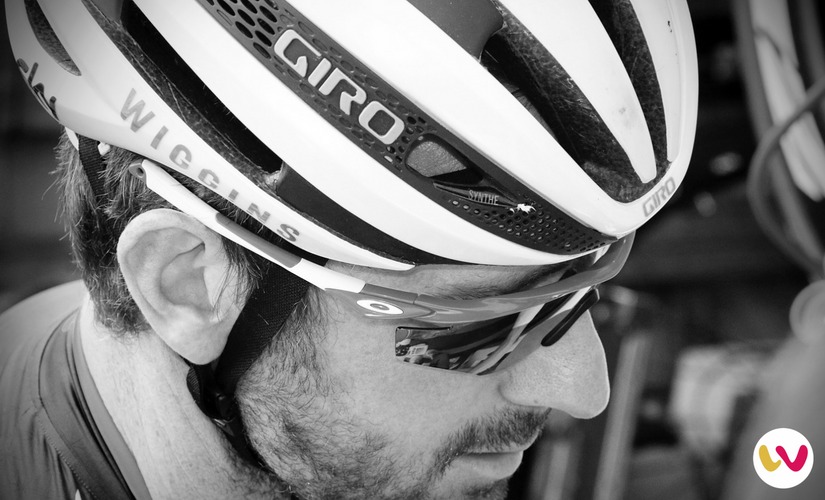
First and foremost is, of course, the cycling helmet, which is arguably the most important cycling accessory you’ll ever own.
Although every cycling helmet will offer some level of protection, like bikes themselves, they vary in price, quality, and style.
All helmets sold in the UK meet two sets of European standards (either EN 1078:1997 or EN 1080:1997).
But like most things in the cycling world, the more that you pay for something, the more you are going to get, as the lighter and better ventilated the helmets are, the more they are going to cost.
Aside from budget, you’ll also need to consider fit, as different manufacturers make different shapes of helmets, and not all of them will suit the shape of your head.
The only way to test this out is to go into a bike shop and try on a selection of helmets. Ensure that the fit is snug but not too tight.
If you find one that mostly fits, but it has a few pressure points, try moving the padding around a little.
Depending on what kind of cycling you intend to do, you’ll need to think about the style and aerodynamics of a helmet.
Teardrop helmets favoured by touring professionals won’t, of course, be suitable for the trails, but you can still get helmets that favour aerodynamics and versatility.
Helmet brands to consider include Kask, Bontrager, Giro, Uvex, and Bell.
Bike Locks
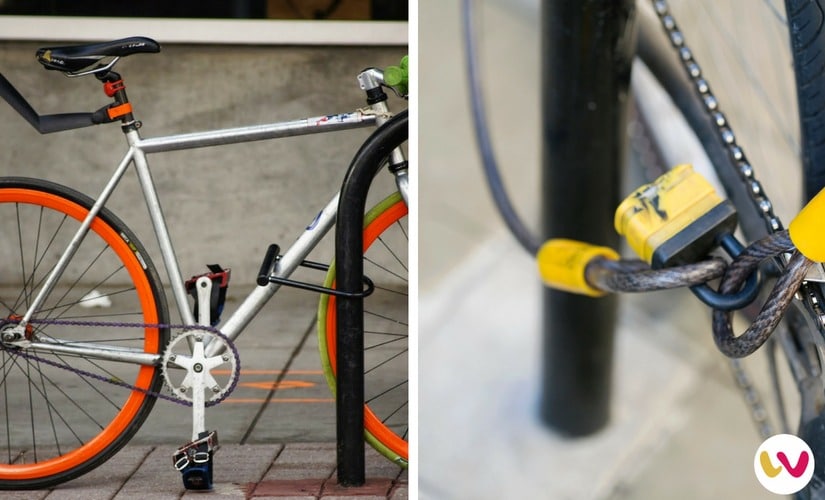
After safety, security is also important, and there’s no doubt that you’ll need a bike lock for when you’re not out on the road or trail.
Across the market, you’ll find a range of bike locks of different quality and type, but getting the best one for your needs is crucial.
The best way to judge the quality of a lock is to check its Sold Secure Rating. This is a three-tier security system, with the gold tier offering the highest level of security.
D Locks
Varying in length, weight, and solidness, D locks are regarded as the most durable locks by the cycling community.
They can be used to lock a bike’s frame to a non-movable object or to secure the wheels to the frame. If you plan to use a D lock, however, ensure to use a cable lock to secure the wheels.
Chain Locks
An anodised chain that is usually covered by a plastic sleeve, chain locks are available in a number of lengths and thicknesses.
They can be secured by a key or some sort of combination or code.
Cable Locks
More flexible than chain locks, cable locks are lightweight and are composed of intertwined metal fibres.
They can also be locked via key or combination code but are more susceptible to bike thieves, who can saw through cable locks in a matter of minutes if undisturbed.
Ground Anchors
If you want to secure your bike while at home, then you’ll probably want to purchase a ground anchor, which you can drill into the floor of your garage or shed.
Most insurance companies will now insist that you secure your bike while at home, and a ground anchor is a perfect solution for this.
Bike Lights
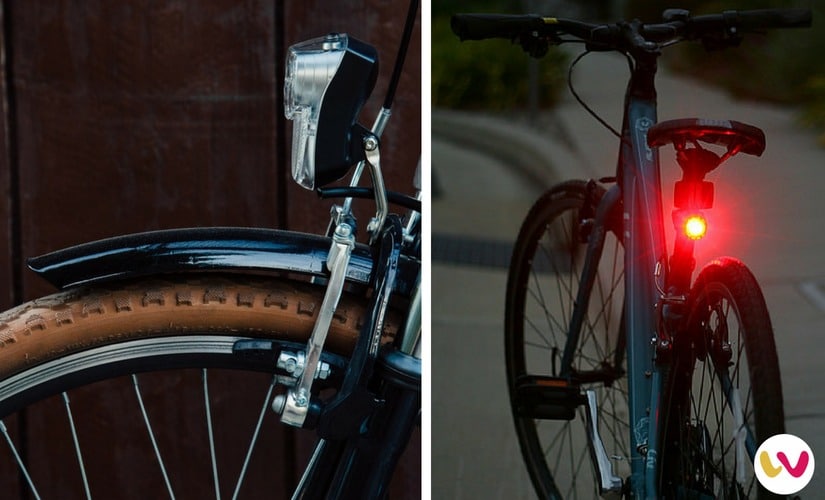
Whether you’re travelling late at night or on a foggy day, it’s crucial that if you’re on the road, you have bike lights installed on both the front and rear of your bike.
Bike lights are actually a legal requirement in the UK.
So before you head out at all, you’ll need a white light attached to the front of your bike and a red one attached to the rear so that you can be easily spotted by motorists and pedestrians alike.
The brightness of bike lights is measured in lumens, and for “seeing lights” you’ll need anything from 700 lumens, through to 1000+, with the latter offering a thick beam of light on some of the darkest roads.
You can also buy “be seen” lights, which are designed for use on lit roads. These tend to start from 100 lumens, but the higher you go, the more of the road you’ll be able to see.
Bike lights can also be bought according to your budget, as you can find some online for as little as £20, while others, which will offer more lumens, top well over £200.
Off-road bike lights can also be bought if you’re due to hit a trail or a bit of off-road on a night, and these usually offer around 1000 lumens.
Whatever you decide, it’s always best to get a light that will give you more battery life than you need so that you always have some in reserve.
If possible, carry additional batteries with you if you expect to cycle at night.
- Read – Cycling Safety Tips
Repair Kits, Spares and Tools
Just like you might have spare parts and the odd tool for fixing something on your car or motorbike, you’ll also need repair kits, spares, and tools for your bike.
Multi-tools
Whether you’re a professional or a beginner, a commuter or a mountain biker, multi-tools are essential pieces of equipment that you’ll want to have at hand at all times.
Able to fit in your pocket, or your saddlebag, multi-tools vary in size, weight and price.
Although some cyclists prefer to carry a small selection of tools on their person, multi-tools are there to keep you covered for when the worst comes to worst, no matter what that might be.
Multi-tools vary in what they offer, but the standard pieces usually have Allen keys, screwdrivers (usually both flat head and Phillips), and a chain tool.
Puncture Repair Kits
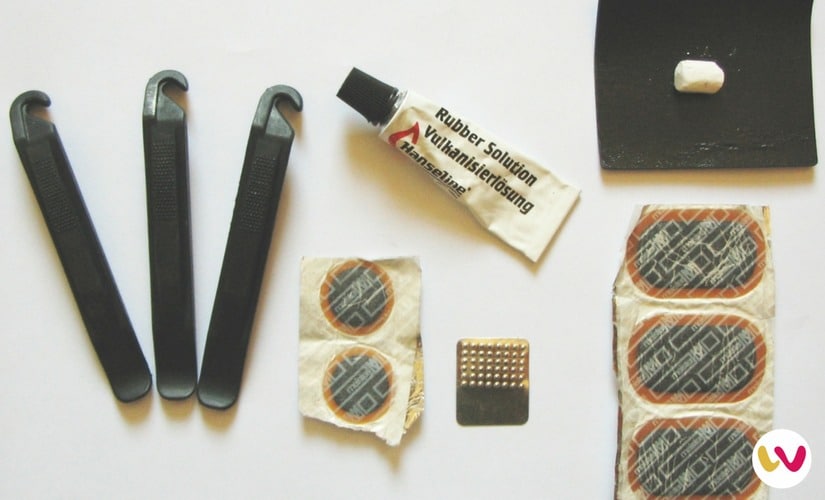
You can find a puncture repair kit almost anywhere, from your local high-end bike shop, through to both Halfords and Wilkinsons.
It’s advised that every cyclist has a couple of puncture repair kits at hand, and the good news is that you can usually buy one for as little as £5.
Repair kits vary in quality depending on how much you’re looking to spend, but you probably won’t find the most expensive kit going far over the £15 mark, and at the end of the day, they all do the same job.
Your typical kit will consist of:
- Patches
- Adhesive tubes
- Tyre levers
- Sandpaper
- Chalk
- Marker crayon
It’s also advised that if you’re travelling particularly long distances, you carry spare tubes (and a pump), especially if you’re touring.
Although most tyres can be repaired on the road, should you find yourself with a flat, it’s always worth having a reserve tyre back in the garage or in the shed.
Mudguards
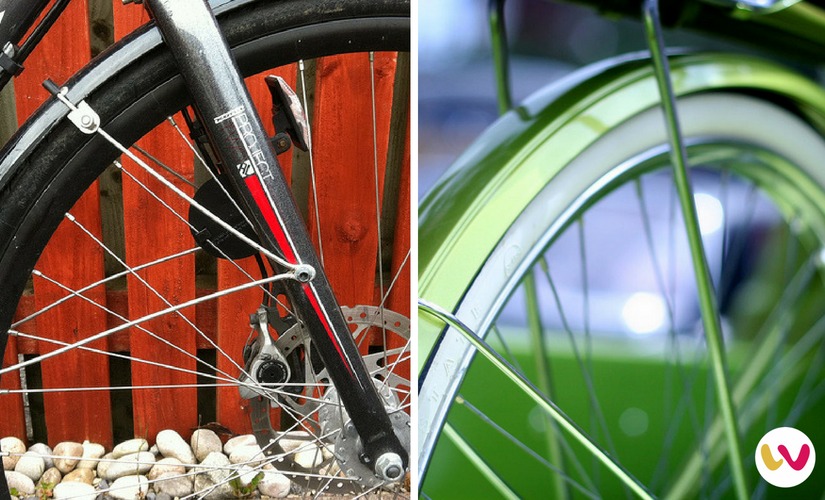
Unless you’re the kind of cyclist that relishes the mud and the myre of the countryside, most commuter cyclists consider mudguards to be an everyday part of biking.
They’re especially important if you do happen to be commuting to work, as even in the cities, you never know when you’re going to miss a water-filled pothole.
That said, however, not a lot of bikes come equipped with mudguards, as most people believe that it detracts from the sportier element of riding.
There are two types of mudguard that you need to consider, “fixed mudguards” for frames with mudguard eyes, and clip-on mudguards, which are for frames without.
In essence, mudguards are there to stop water coming off the wheels and onto the body, and the longer a guard is, the more protection that it will offer.
It’s important to remember that having a cover near your tyre means that you might encounter additional noise while riding, as floppy guards can rub on a tyre or bounce as you cycle, so when you’re fitting them, consider the quality and security of the guard before you head out.
You can pick up a pair of mudguards for as little as £30 online, though prices will vary depending on the quality and length of the guard.
If you’re in the U.S. or are heading there with your bike, expect mudguards to be called ‘fenders.’
Cycling Backpacks and Bags
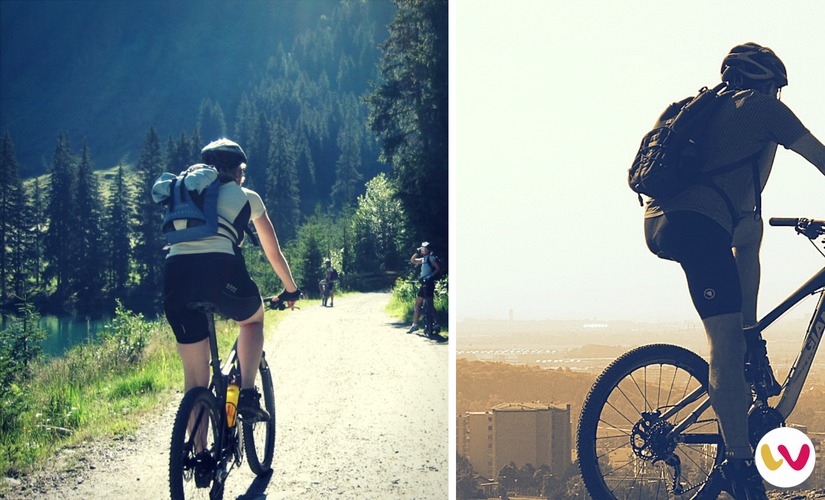
For those who commute or those that need to take their work with them, specially designed cycling backpacks are largely an essential piece of kit.
That said, some cyclists opt for panniers that can be fitted to the handlebars or a frame of a bike.
Most cyclists will opt for backpacks over panniers, however, as there can be significant advantages for owning them, as no fixings need to be attached to the bike and weight distribution isn’t affected.
What’s more, if you need to quickly switch a bike for any reason, the backpack stays with the rider and not the bike.
On the other hand, however, panniers don’t put pressure on a rider’s shoulders or back, and they won’t make the rider sweat during warmer weather periods.
Whichever carry option you choose, most brands will try and make their backpacks and panniers as light and as secure as possible.
If you plan on touring anytime soon, however, you might want to have a longer think about what the best option will be. If you have a friend with either a pannier or a backpack, it’s worth asking them to see if you can try them out while riding.
The consensus for touring cyclists is to opt for the backpack, but not everyone agrees, so it’s definitely worth finding out for yourself.
Waterproof and High-Visibility Jackets
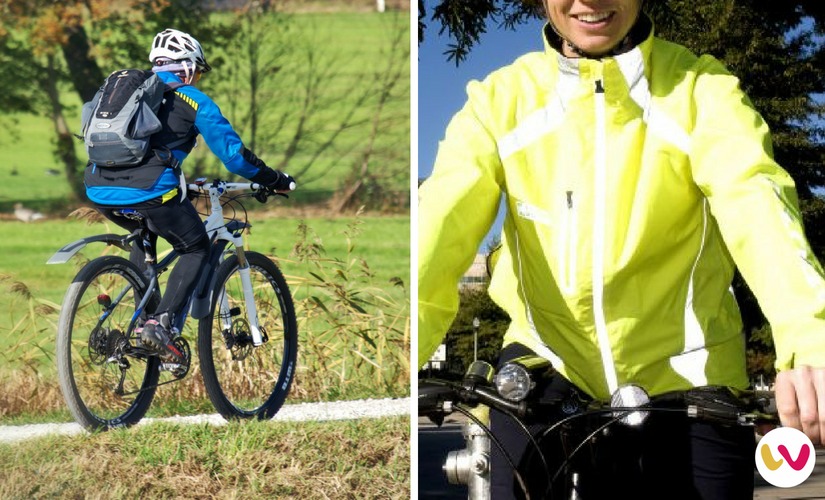
While cycling in the summer can be one of the most invigorating experiences you can have in the great outdoors, you also need to be prepared for when times aren’t quite as rosy.
Although many beginners opt to buy normal waterproof jackets or wear the coats that they already have, cycling waterproofs are designed to do two things:
- Keep the water out
- Stop sweat building up on the inside.
That said, you will need to find one that fits your size and body type so that it can work its magic.
Many brands used advanced and specially designed materials, while others design vent systems into their jacket designs so that garments are both waterproof and breathable.
You can also buy jackets that you can pack down so that they fit in your pannier, backpack, or even your pocket, which helps if you’re unsure on whether it is going to rain or not.
When searching for the right jacket, you’ll often see the acronym, DWR, which means Durable Water Repellent. This means that the jacket has had a treatment applied to its outer surface, which helps shed water without inhibiting breathability.
You’ll also find that the majority of waterproof fabrics are made from laminate fabrics; consisting of an inner fabric for wicking moisture, a membrane, and an outer face fabric that’s undergone DWR treatment.
For those that plan to cycle during winter periods or at night, you’ll also be able to find a wide range of waterproof garments that double up as high-visibility (hi-vis) jackets.
Investing in a high-visibility jacket is certainly worthwhile, as you’re four times more likely to be involved in a collision with a car at night.
Jackets that can be deemed as safety equipment will carry the official CE mark of either standards EN471 or EN1150.
Cycling Accessories for Serious Beginners
If you’re really looking to up your game from the very first mile, then you might want to consider a few of the following accessories that will help you get a head start from day one.
Bike Clothing
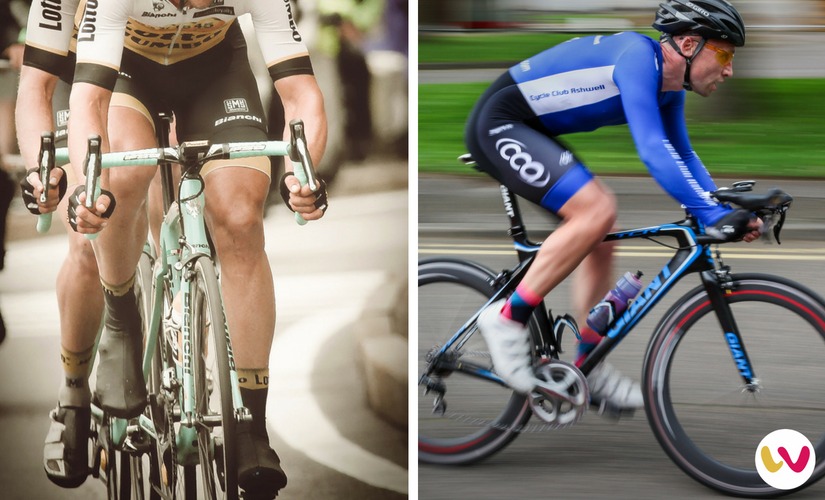
It’s not unusual for beginners to be a little nervous about wearing bike clothing, as, after all, it will look and feel a little weird to start with. That said, if you’ve got this far, you’ve got nothing to worry about.
Comfortable, and perfect for longer journeys, bike clothing is definitely worth the expense if you can afford it.
If you’re looking to tour or ride an exceptionally long journey, it’s well worth looking into outfits made from lycra, which can come in a variety of wonderful designs, from those that are more casual, to ones that are fluorescent and brightly coloured.
Not only is lycra comfortable, but it’s also highly stretchable, close-fitting and breathable. Many cyclists also wear lycra without underwear, so remember to pop them in the wash once you’ve been out.
For those that intend to hit the trails, you can also find loose fitting cycling shorts with padded liners and non-clingy jerseys, which is great if you want to pop into a cafe for a rest, or the pub once you’re done.
Cycling Shoes
Cycling shoes often fall into two categories, “clip-less” or “clip-in”. The latter kind comes with cleats located in the bottom of the shoe, which you can clip into clipless pedals.
This means that cyclists are able to generate more fluid effort in the whole of the stroke, pulling the pedals up as well as pushing down.
Clip-in shoes tend to have thinner soles that flex a little less than normal shoes, which gives riders more power through the pedals and feature buckles, straps, and laces to help keep feet in position.
They also help you avoid slipping and making awkward movements while you cycle, which you might encounter with traditional shoes or other sports shoes.
Aside from clip-less and clip-in bike shoes, you’ll also find a variety of designs depending on the kind of bike you ride.
Road cycling shoes, for instance, will often have a smooth low-profile plastic and won’t have grips or lugs. They will, however, feature vents and a combination of buckles and straps.
Mountain bike shoes will have lugs and grips on the soles and will be made of tougher, water-resistant materials.
When finding the right ones, it’s always best to buy your first pair of cycling shoes from a shop rather than online so that you can try them on.
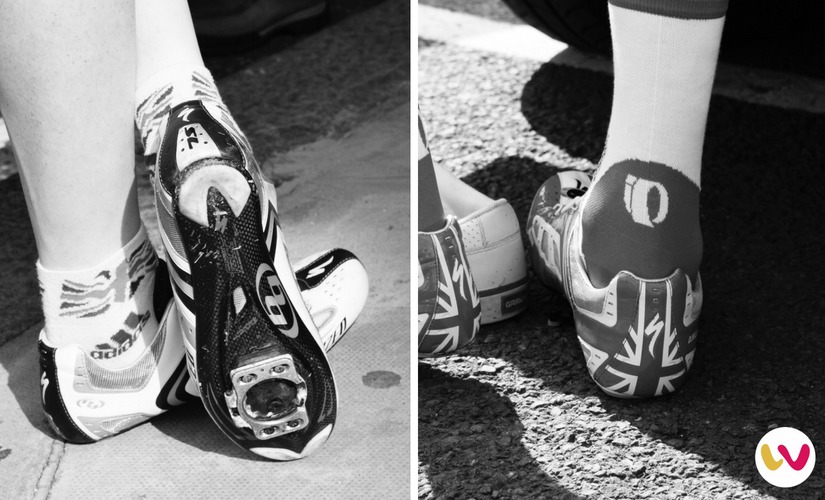
Clip-in Pedals
Clip-in pedals (also, confusingly, known as clipless pedals), are designed to give you more control over your bike and help to stop your feet from slipping off, which can lead to disaster in wet weather.
Made of two components (the pedal and a cleat), clip-in pedals attach to your bike like a regular pedal, and also to the soles of clip-in cycling shoes.
Spring mechanisms allow you to easily clip the cleats onto your shoes and in and out of the pedals.
While searching for clip-in pedals, you’ll find two different kinds, featuring three bolt and two bolt systems.
You tend to find that the three bolt system is used for road bikes, while the two bolt system is used primarily by off-road, commuting, and touring cyclists.
When buying clip-on cycling shoes it’s important to check whether they are compatible with your clipless pedals. Although most are compatible with both bolt types, some might only be compatible with one or the other.
Using clipless pedals can, of course, be daunting for beginners, but it’s worth practising using them before you head out on the road so that you can enjoy using them without worrying about mistakes.
Luxury Cycling Accessories
If you’re into gadgets and technology, then you’ll be glad to know that cycling, much like other sports, has a whole host of luxuries to help you enjoy your ride.
Cycling Watches and Computers
Today, both watches and cycling specific computers are hugely popular with cyclists, as they help to record vast amounts of data for analysis and social purposes.
Depending on what you want to do with your watch or computer, there are a few features to keep an eye out for so that you can ensure the best gizmo for you.
Bluetooth, for instance, is great if you want to connect your watch to a heart rate strap, or a speed and cadence sensor.
You generally find Bluetooth enabled on most computers and watches, although Bluetooth in GPS watches can create difficulty when connecting to power meters (this is because units from SRM and Quarq only broadcast an ANT+ signal, while devices from Stages and powerup can do both).
Also keep an eye out for pieces that offer good battery life, as there’s nothing worse than a dying piece of tech halfway through a ride.
GPS will also drain a battery, so ensure that you check the ‘inactivity’ or GPS battery life before you head out.
Watches that are able to connect to the GLONASS network will also offer ultimate accuracy for speed and distance. Although this can also drain battery life, many come with switches so that GPS reports can be sent less frequently without sacrificing too much accuracy.
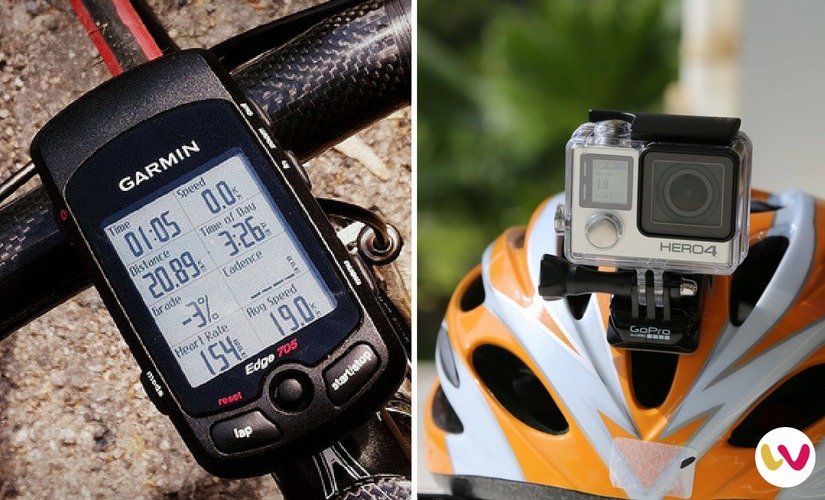
Helmet Cams
In the modern world, there’s no doubt that cameras are just about everywhere. From our mobile phones through to our laptops, some say that they have slowly taken over our lives.
Although most cameras are meant for fun or for business, cyclists use helmet cameras to help protect them on the road should anything happen in the case of an accident.
On the other hand, they’re also great for being able to explain your rides to other people, to introduce friends to the idea of cycling, or to publicise a particularly exciting route via the internet.
Depending on what you want to use your camera for, it’s important to understand that there is a difference between sports cameras and safety cameras. GoPro cameras, for instance, aren’t considered to be safety cameras, despite providing beautiful and high-quality footage.
There are a range of features to consider, including the resolution of the camera, whether it has image stabilisation, whether it is both waterproof and shockproof, what its mounting options are, and of course, its battery life.
Aside from a front-facing camera, you might also want to consider a rear-facing camera mounted on the bike frame, depending on the type of road that you travel on. Many cyclists use two cameras for optimal coverage.
Prices can range anywhere from £100-£400 for a decent helmet camera.
Power Meters
Cycling meters are terrific if you want to know how well you are performing, as they help riders understand how much power they are exerting.
They work by utilising strain gauges that deflect when a force is applied. By measuring the torque and cleverly combining it with angular velocity, power can then be calculated, which is presented in watts.
Cyclists use them to measure and analyse their workouts and these small tools can be placed either on the rear wheel hub, bottom bracket, chainrings and crank spiders, crank arm, or on the pedals.
For those looking for accuracy, chainring meters are very accurate but don’t measure power differences between the left and right leg. They can also be difficult to switch between bikes.
For ease of fitting, pedal meters are simple and quick to attach, though they are not quite as accurate and are more at risk of being damaged.
Hub-based power meters are often considered to be the simplest on the market.
It’s worth shopping around for a power meter that suits both you and your bike, and prices start at around £500.
Make sure you have a clear idea of why you want one before you hand over your money, however, as you need a clear understanding of the data it presents, as well as how to use it effectively and to your advantage.
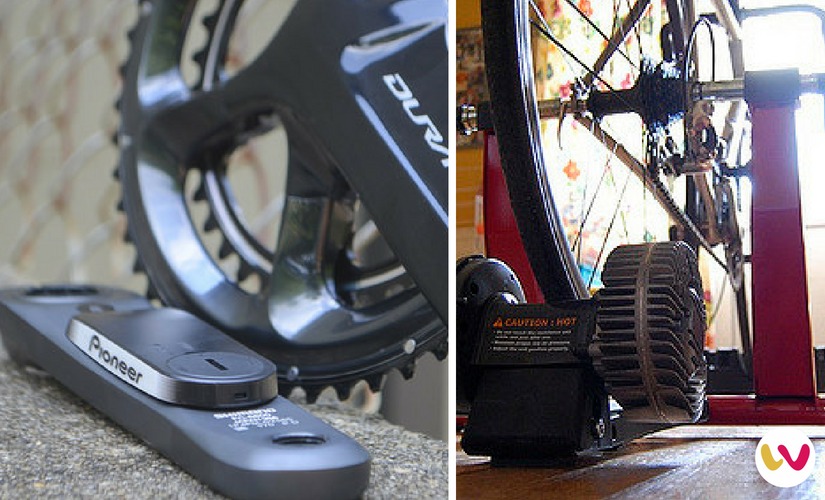
Turbo Trainers
For when the weather is a little too horrid, turbo trainers are perfect for enabling you to ride while stationary in your very own home.
Even professional cyclists sometimes use them during the winter months when training for a race, and they’re great for targeted training and maintaining fitness in general.
Some turbo trainers even have inbuilt computers with Bluetooth capabilities so that they can seamlessly transfer data between devices.
As you can imagine, turbo trainers enable you to partake in a variety of different types of cycling, from time trials to sprint reps, and everything is saved in easy to store units.
There are a variety of turbo trainers on the market, including magnet trainers that use magnetic resistance, fluid trainers, which are often considered a step-up from magnetic trainers, and direct train drivers, which are the most high-tech.
If you’re searching the market for a turbo trainer, and you’re just starting out cycling, the chances are that a magnetic trainer will do the trick to start out with.
Prices for turbo trainers start at around £200 (although they are cheaper second-hand) and can go for well above the £1000 price region.
If you have any questions about any of the cycling accessories mentioned or want to know more information about any other kind of biking accessory, drop me a comment below.


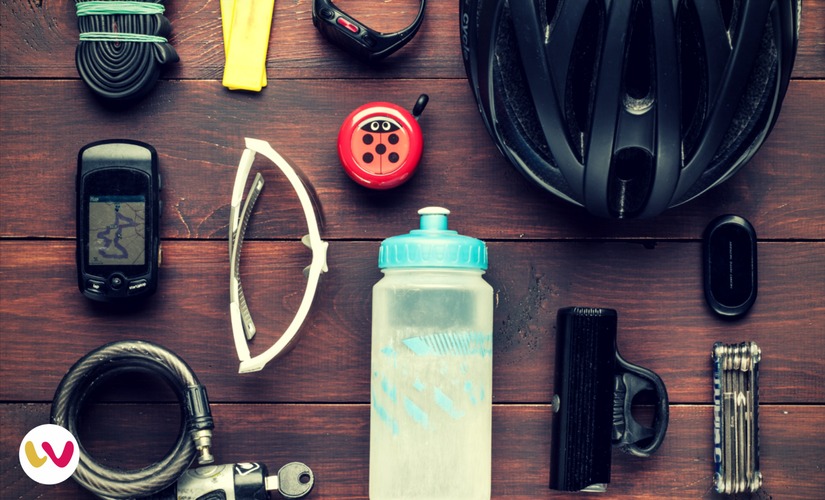
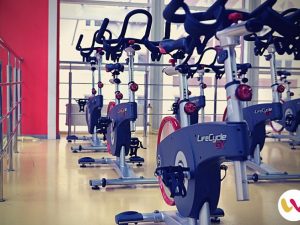
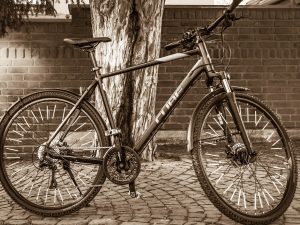
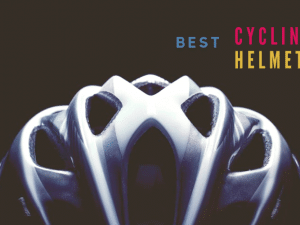

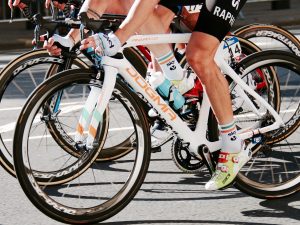
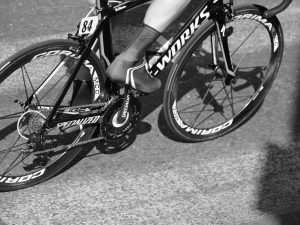
Add Comment